Using Neem Oil to Kill Spider Mites: A Complete Guide
I’ve dealt with plenty of garden pests over the years, but of all of them, spider mites might be the most infuriating. They show up out of nowhere and reproduce quickly, and if they aren’t stopped, they’ll suck the chlorophyll from your plants and kill them within a few short weeks.
In fact, it was because of spider mites that I began blogging in the first place. I wanted to share what I’d learned over the years in order to help others avoid my mistakes.
Because here’s the thing: If you catch them early, spider mites are easy to kill. If you don’t, you’ll likely have a mess on your hands.
There are many proven ways to kill spider mites, but I’d like to share a recipe for my favorite homemade spider mite killer: neem oil spray.
Neem oil is a natural insecticide that’s derived from neem tree seeds. In its concentrated form, it has a thick consistency and a pungent, sulfurous smell, but when mixed properly with water and a mild organic emulsifier, it becomes a safe, powerful pesticide for both home and garden plants.
Disclosure: This post may contain affiliate links to some of my favorite products found on Amazon and other retail sites. I’ll earn a small commission from purchases made through those links, at no additional cost to you. Please read my product disclosure page to learn about the care I take when recommending products to my readers.
I prefer organic pesticides since I like to keep my plants free from harsh chemicals. Of all the store-bought and homemade products I’ve tried over the years, I keep coming back to neem oil. It’s relatively cheap and surprisingly efficient at killing spider mites, not to mention many other garden pests.
Below, you’ll find a complete guide to making neem oil spray and using it on both indoor and outdoor plants.
If you’re ready to jump right in with mixing your own neem oil spray, try these products. They’re the ones I’ve had lots of success with in my own backyard.
- Verdana Neem Oil concentrate is a great product. It’s always worked well for me!
- Dr. Bonner’s peppermint liquid castile soap can’t be beat. Some people recommend Dawn, but I don’t like the unnecessary chemical. Dr. Bronner has everything you need and nothing more.
- Chapin 1-Gallon Sprayer: Any cheap garden sprayer will work. For neem oil, I prefer either 1-gallon sprayers or even smaller ones (since you can’t store leftover neem oil).
I’ll provide details below that cover every part of the process, but if you want to skip to a particular section, just use these links:
- Are Spider Mites Really That Bad?
- How Do I Know if I Have Spider Mites?
- What’s Neem Oil?
- Why Should I Use Neem Oil?
- How Do I Make a Neem Oil Spray?
- When Should I Apply Neem Oil?
- How Often Should I Spray My Plants?
- How Much Does Neem Oil Cost?
- What Bugs Does Neem Oil Kill?
At the bottom, I’ll share additional information about spider mites treatments and point you in the direction of other articles I’ve written on the topic that’ll help you identify and kill these tiny pests.
Are Spider Mites Really That Bad?
What makes spider mites a major garden pest is their ability to reproduce exponentially. Within just a few days after hatching, a single female spider mite can produce 8-20 eggs per day and live up to 3 weeks. That means that one female spider mite, if left undisturbed, can theoretically produce 300+ eggs by the end of her life. That’s a horrifying statistic for plant lovers.
Not only do spider mites reproduce quickly, they also attack over 200 plant varieties and have the ability to spread quickly from one plant to another and from property to property.
What this shows is that you’ve got to get aggressive with spider mites the moment you see them. Killing 1 spider mite is easy. Killing thousands requires much more time and attention.
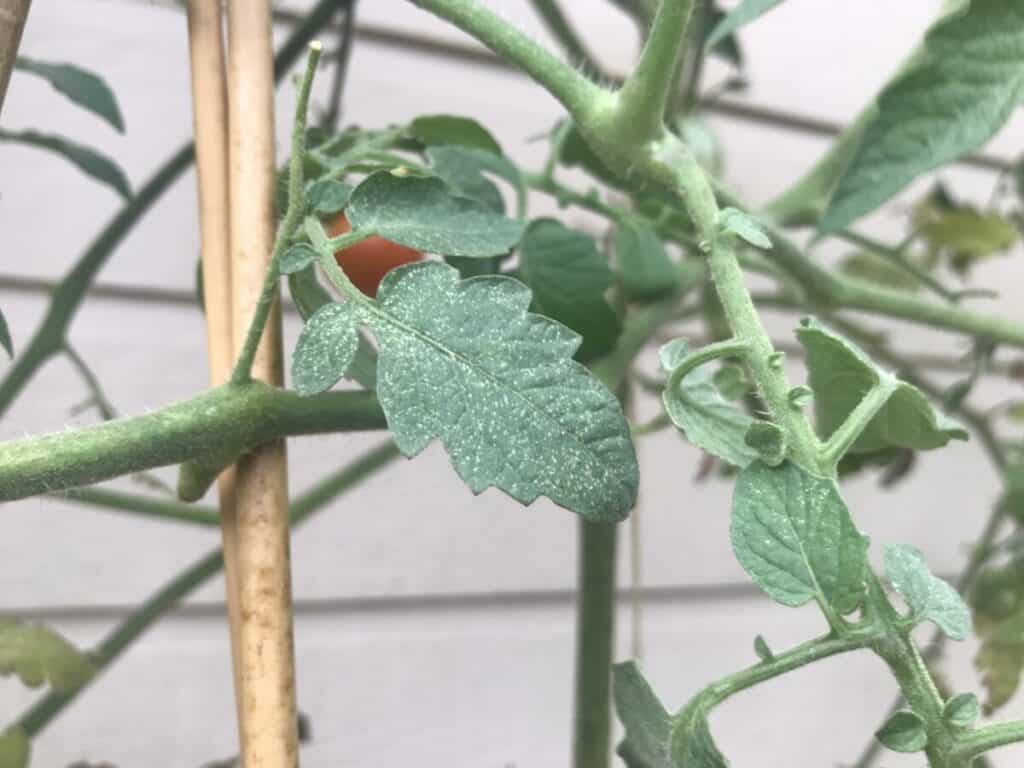
How Do I Know If I Have Spider Mites?
When spider mites first attack a plant, they’ll leave a slight stippling effect across a few leaves. This is how you’ll know if you have spider mites in your home or garden, so pay close attention to the leaves whenever you’re purchasing or caring for your plants.
Unfortunately, determining if you have spider mites is merely the first step. You’ve got to follow this up by asking yourself the question, “How bad is the infestation?”
I mention this because, unlike some bloggers, I don’t advocate a one-size-fits-all approach when it comes to fighting spider mite infestations. As I’ve noted in this article on the stages of spider mite infestation, you’ve got to take into account the level of infestation and extent of damage before coming up with a treatment plan.
(And when it comes to fighting spider mites, you need a treatment plan. You can’t simply spray here and there and hope for the best.)
Simply put, the earlier you catch an infestation, the better off you’ll be. The more advanced the infestation, the more it’ll take to stop the spider mites from spreading.
What’s Neem Oil?
As I noted above, neem oil comes from neem tree seeds. Neem trees (Azadirachta indica) are distant, fast-growing cousins of mahogany trees, and although they originated in India and Southeast Asia, they can now be found all across Asia, Africa, and South America.
These trees produce grape-like clusters of greenish, edible fruit, and the seeds from those fruit–when harvested, dried, and pressed–produce an oil that’s known for both its medicinal and insecticidal qualities.
Why Should I Use Neem Oil?
Neem oil is an effective insecticide for two primary reasons:
First, neem trees produce, within their seeds, a naturally occuring chemical compound called azadirachtin. Azadirachtin is biodegradable and practically non-toxic for humans and pets (as long as it’s not ingested), but it causes hormonal problems for many kinds of insects, preventing them from completing their life cycle.
Second, when insects are hit with a neem oil spray, they’re literally coated in a slight oily film that chokes their ability to function. Depending on their hardiness, that alone kills a wide range of soft-bodied pests (aphids, cucumber beetles, thrips, white flies, etc.). It’ll also kill pests such as leaf-footed and squash bugs when they’re in their nymph stages and thus don’t yet have their adult exoskeletons.
(I’ve tried neem oil on adult leaf-footed and squash bugs, but it seems largely ineffective against them, so if you’re battling larger pests, a neem oil spray might not work all that well.)
One side benefit of spraying spider mite infested plants with neem oil is that it’s got fungicidal qualities. It breaks down quickly in sunlight–and it can damage plant foliage if applied during hotter times of the morning and early afternoon–but there’s some evidence that suggests it might help plants when it comes to blight, powdery mildew, and other fungal diseases.
How Do I Make a Neem Oil Spray?
Making your own neem oil spray is no different than following a recipe for your favorite meal. There are several must-have ingredients, but countless varieties depending on which recipe you use.
An effective neem oil spray has three primary ingredients: neem oil concentrate, an emulsifying agent, and water. When combined properly, these ingredients create a potent yet natural pesticide that kills a variety of home and garden bugs.
Here’s what you need to know about each ingredient:
- Neem Oil Concentrate: This product is typically sold in 16-ounce bottles. It’s a thick, darkish liquid and is not meant to be applied to plants unless heavily diluted. Applying the concentrate directly to plants will likely result in foliage damage. It’s also wasteful since the diluted form of neem will last much longer and provide much more coverage.
- Emulsifier: As most people know, water and oil do not mix well. Emulsion is a complex chemical process, but simply put, it just means that you’re adding something to water and oil to make it possible for them to mix. If you add neem oil and water to a sprayer and forget to include an emulsifying agent, you’re going to have an ineffective spray since the neem oil will have separated from the water.
- Water: When it comes to making a neem oil spray, you don’t need to use filtered water. Simply fill a 16-ounce spray bottle or a 1- or 2-gallon sprayer with water from your tap, and that’ll work just fine.
In addition to these primary components, there are a variety of secondary ingredients that people like to add to their recipes: garlic, mint, molasses, hot peppers, even seaweed. I personally like this garlic-mint recipe, especially if you’re interested in keeping indoor houseplants free of spider mites.
But when it comes to my personal preference, I want a neem oil spray that’s a) highly effective and b) very simple to make. I’m not interested in boiling, cooking, or blending various secondary ingredients because I want to create and use my spray as quickly as possible so that I can spend my extra time doing things I love–both in my garden and with my family.
That’s why I like my recipe. I can mix a batch of neem oil spray in as little as five minutes and then get to work.
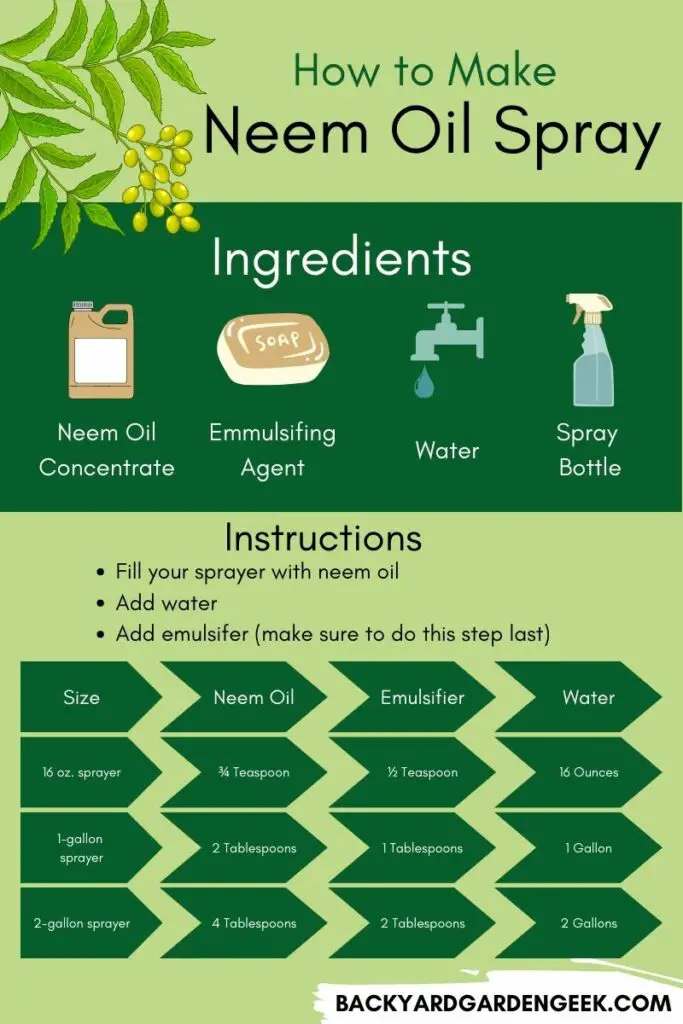
Before I go into more detail about each step of the process, here’s a quick step-by-step overview of what it takes to make the perfect neem oil spray, with a recipe below for both 16-ounce bottles and 1- and 2-gallon sprayers:
- Determine the extent of your problem: If you’re treating a few indoor house plants, you’ll need substantially less spray than if you’re treating numerous garden beds.
- Pick an applicator: For indoor houseplants, I’d recommend a 16-ounce bottle. You can buy pre-made neem oil sprays for lighter applications–such as Captain Jack’s or Natria–or you can mix your own using my recipe below, which is what I’d recommend since it’s much more cost effective. For outdoor applications, you should purchase a 1- or 2-gallon spray bottle like that sold by Chapin or Vivosun since you’ll need more coverage.
- Choose your neem oil: There are lots of products available. I’ve used these: Verdana Neem Oil and Bliss Neem Oil.
- Choose your emulsifying agent: I prefer Dr. Bonner’s, Mrs. Meyer’s, or Safer Brand, but you can use most any mild soap. Avoid dish soaps like Dawn if at all possible since there are better, natural options available.
- Fill your sprayer with neem oil, then add water: Do not add the emulsifier before the water. If you do, you’ll create lots of soapy foam as you fill the sprayer with water, and you might end up having a mess on your hands or needing to wait a bit for the foam bubbles to subside.
- Add the emulsifying agent, then mix thoroughly: Once your ingredients are added and the bottle has been sealed, you can shake it as much as you want to mix the ingredients well.
A few words about applicators: When it comes to 16-ounce spray bottles, you can buy one or simply re-use one that you’ve got in your house. Just be careful when it comes to reusing spray bottles. You need to make sure that the bottle has been washed thoroughly. I only reuse bottles that have had organic cleaning solutions in them in the first place, then wash and re-wash them a few times to ensure they’re clean.
For outdoor plants, you’re much better off buying a 1- or 2-gallon sprayer (or both). These might be a little intimidating if you’ve never used them before, but trust me on this one: they’re super simple to use.
(Some time back, I purchased several cheap Scotts sprayers, but I don’t like them very much. The wands don’t stay attached to the bottles very well, and the 1- and 2-gallon markings on the side of the bottle are so faint that I had to go over them with a sharpie.)
These are the sprayers that I prefer (see below). You’ll spent $5 to $10 more per bottle than the cheap ones you’ll find at the big box stores, but you’re going to be using these spray bottles for years, so you might as well get one that won’t cause future headaches:
- Chapin 1-Gallon Sprayer
- Chapin 2-Gallon Sprayer
- Vivosun 1.35-Gallon Sprayer
- Vivosun 2-Gallon Sprayer
I own several spray bottles since I like to mix the same ingredients in the same sprayer–whether that’s for neem oil sprays, insecticidal soap sprays, or organic fungicide sprays–instead of constantly mixing different substances in a single sprayer.
Whatever sprayer you prefer, here’s my simple recipe for three popular sizes:
| Size | Neem Oil | Emulsifier | Water |
| 16-Ounce Sprayer | ¾ Teaspoon | ½ Teaspoon | 16 Ounces |
| 1-Gallon Sprayer | 2 Tablespoons | 1 Tablespoons | 1 Gallon |
| 2-Gallon Sprayer | 4 Tablespoons | 2 Tablespoons | 2 Gallons |
There’s nothing inherently special about the neem oil concentrate I use (a product called Verdana Neem Oil). I’ve used other brands in the past–such as Neem Bliss and Captain Jack’s–but I buy Verdana simply because it’s a great concentrate and tends to be one of the more affordable options out there.
However, as long as you purchase a quality neem oil concentrate, and follow my recipe above, you’ll be fine.
When it comes to emulsifying agents, you’ve got plenty of options, but I’ll list my top three:
- a castile soap such as Dr. Bonner’s
- a dish soap such as Mrs. Meyers
- an insect killing soap such as Safer Brand
Personally, I prefer Dr. Bonner’s Peppermint Castile Soap. Not only does it act as an effective emulsifier. It also contains mentha arventis, an essential oil that has been shown by researchers to have certain larvicidal and mosquito repellent qualities.
You’ll hear many people talk about adding dish soaps like Dawn to their insecticidal sprays. Dawn will work, of course, but I don’t recommend it because a) there are better, affordable options on the market and b) Dawn contains certain ingredients (sodium lauryl sulfate, sodium laureth sulfate, ethylene oxide, etc.) that I don’t want in my garden.
The products I’ve listed above are only slightly more expensive than Dawn, and they’ll guarantee that your neem oil spray is as safe and natural as possible one. Why not use them?
When Should I Apply Neem Oil?
If you plan to spray your plants with neem oil, you need to be very careful and deliberate about when, how, and how often you apply it.
Neem oil should be applied in the late afternoon or early evening, typically between the hours of 6:00 PM and 8:00 PM. If applied too early in the day, the oil will damage the plant’s foliage. If applied too late, visibility will be limited, increasing the chance of mis-applications.
I prefer to spray my plants with neem oil as late as possible in the day while still benefiting from full visibility, which means that I can’t recommend a set time because the sun will set at different times depending on the season and your geographic location.
But this is easy to figure out on your own. Simply take note of when the sun goes down and set an alarm 30 minutes beforehand, one that’ll remind you to go outside and spray your plants before it gets too dark to do so.
Don’t underestimate the importance of an alarm, especially when you’re battling a spider mite infestation. If you miss an application, you’re simply giving the spider mites more opportunities to reproduce and continue destroying your plants.
How Do I Apply Neem Oil?
When it comes to spider mites, the neem oil spray will only work when it comes in direct contact with the pests. In other words, you must coat them in the spray in order for it to disrupt their biological and hormonal systems.
Unlike diatomaceous earth–which will remain on the plant until it’s washed off and can injure insects that happens to cross over or land on it–neem oil will dry within a few hours, which is why it’ll take repeated applications to control spider mite infestations. This is also why it’s important to apply it in the late afternoon or evening hours. By doing so, you allow the spray to dry overnight so that there’ll be no damage to the plant once temperatures increase the following day. This is not really an issue when it comes to indoor houseplants; it only applies to plants that are exposed to direct sunlight.
When applying, be sure to set your sprayer nozzle to a mist or cone setting. You don’t want to shoot streams of neem oil spray, which will coast some sections of the plant while missing others. Your goal is to cover the plant’s foliage as completely and evenly as possible.
To this end, you’ve got to spray both the tops and bottoms of all leaves because spider mites are notorious for clinging to the undersides of foliage and in the folds of curled leaves. As I’ve written elsewhere on this blog–in articles about what spider mites look like and how they spread between plants–if you fail to spray all surface areas of your plants, there’s a good chance that spider mites will survive the spray, live on, and continue reproducing.
Now let’s be clear: Unless your problem is with a single small plant, you will not be able to achieve 100% coverage across all affected plants in a single day. Instead, you’ll need to schedule regular, thorough applications of your neem oil spray so that you’ll catch, at some point over the course of a week or two, any spider mites that managed to avoid earlier sprays.
How Often Should I Spray My Plants?
If you’d like to see a detailed overview of the treatment plans I’ve developed to halt spider mite infestations, take a look at my article Can Plants Recover From Spider Mites? What You Need to Know.
But here’s a simple sketch of my approach:
- For light infestations, I spray my plants every day for 4-7 days, using both an insecticidal soap spray (up to 6 days) and a neem oil spray (1 day).
- For moderate infestations, I get more aggressive because these can spiral out of control quickly. I spray my plants for 10 straight days, alternating between insecticidal soap sprays (8 days) and neem oil sprays (2 days).
- For advanced infestations, I trim all dead foliage, then spray my plants for 16 straight days, alternating once more between insecticidal soap sprays (12 days) and neem oil sprays (4 days). This might seem a bit extreme to some, but if you’ve got an advanced infestation, you likely have thousands or even tens of thousands of spider mites in your garden. You’ll need to get aggressive in order to stop their spread.
I’ve seen some people recommend spraying neem oil for several days in a row, but I don’t do that. I typically spray neem oil once every 4 days. When I’ve fought off spider mite infestations, I’ve seen the best results when I alternate between soap sprays and neem oil sprays and take an aggressive approach to applications.
How Much Does Neem Oil Cost?
What you’ll end up paying for a good neem oil spray will depend entirely on whether you’d prefer to buy a pre-made spray or make your own.
Pre-made sprays will typically cost $10 for 24- to 32-ounce bottles, which means you’ll be paying anywhere from $.31 to $.42 per ounce. Two of the more popular, available sprays are:
But if you’re willing to take a few minutes to make your own neem oil spray, you’ll save quite a bit of money. A 16-ounce neem oil concentrate will cost $18 to $20, but it’ll make approximately 16 gallons of neem oil spray (yes, gallons!). In terms of price per ounce, you’ll only be paying $.009 to $.01 per ounce, which is roughly 40 times less expensive than the pre-made sprays.
In other words, don’t buy the pre-made stuff unless convenience is your top priority. If you’re willing to follow my recipe and spend five minutes mixing ingredients for your preferred sprayer (16-ounce, 1-gallon, or 2-gallon), you’ll have a spray that’s just as effective as any pre-made product for a fraction of the cost.
Now that you know how to make your own neem oil spray, take a look at the information below to learn more about spider mites.
You can also check out my other articles on the subject:
- Are Spider Mites Spiders? How to Identify These Garden Pests
- Where Do Spider Mites Come From? What Science Has to Say
- What Plants Do Spider Mites Like, and What Do They Hate?
- 27 Plants that Resist, Repel, and Trap Spider Mites
- Do Marigolds Repel or Stop Spider Mites
What Bugs Does Neem Oil Kill?
In general, neem oil can kill a wide variety of bugs, so you’ll need to be careful to spray your plants in the early evening when pollinators aren’t as active as they are during daytime hours.
Neem oil sprays are most effective against soft-bodied pests such as aphids, cucumber beetles, gnats, grubs, mealybugs, thrips, white flies, and nymphs of all kinds.
Although it typically doesn’t kill bees, it can incapacitate other helpful pollinators such as butterflies and moths. I’ve seen some people claim that neem oil sprays will kill squash bugs, stink bugs, and even leaf-footed bugs, but in my experience, it’s largely ineffective against these insects unless they’re in their nymph stages.

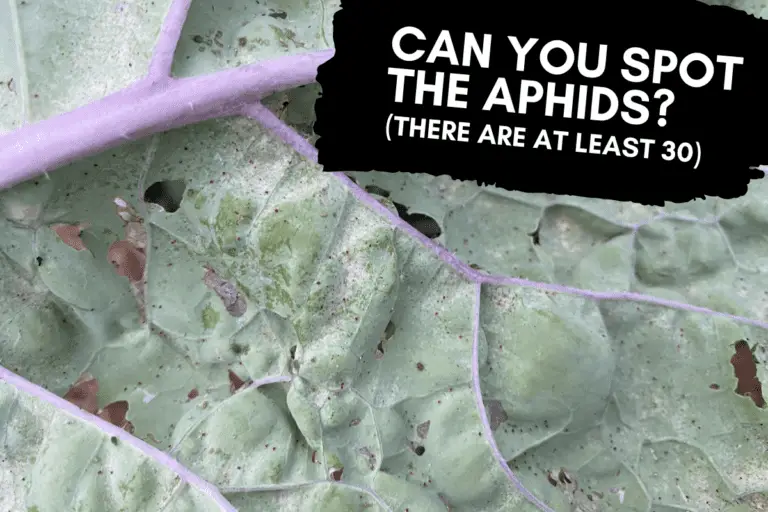
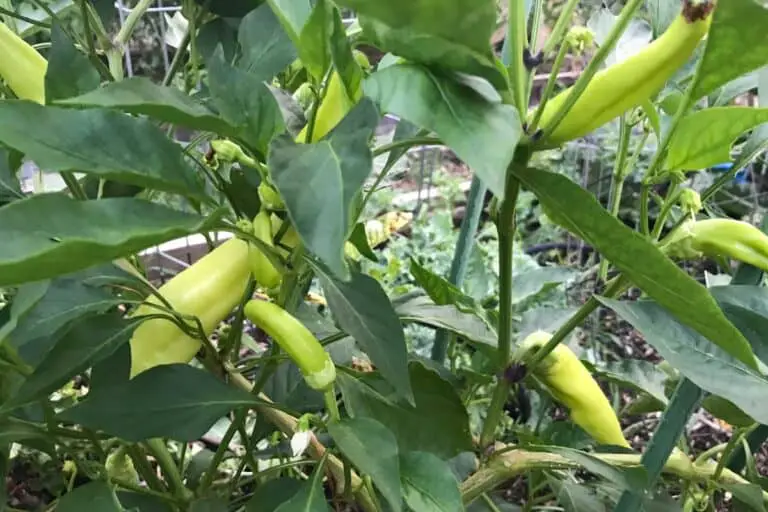
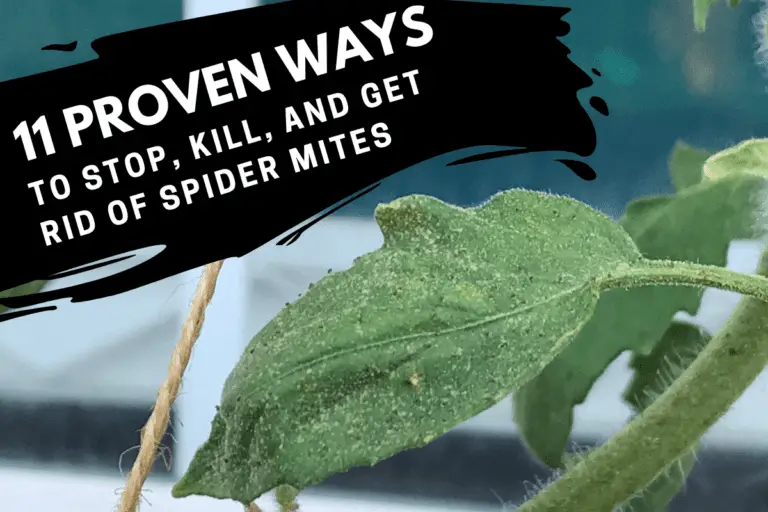
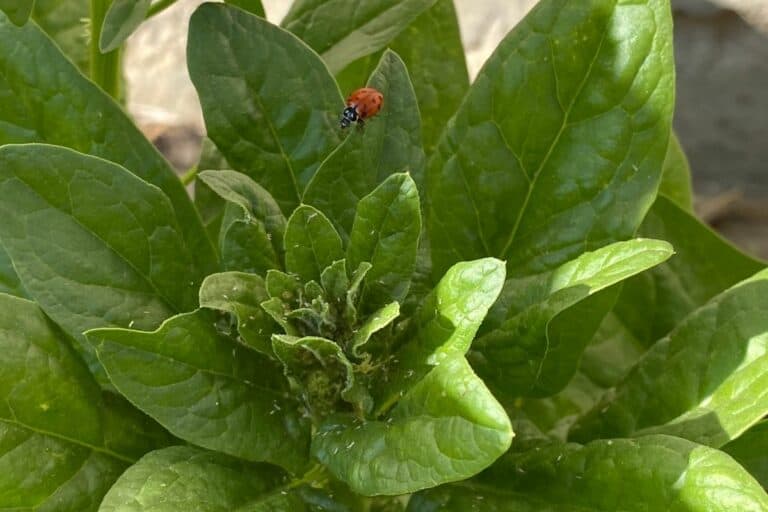
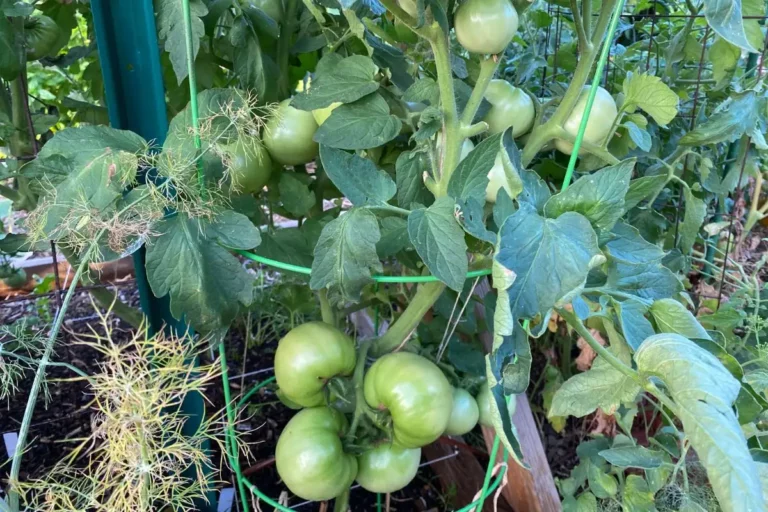

Hello! Trying to keep aphids off my Rose Of Sharon is always a full time job! It’s still chilly here in NC with just a few warm days, and today I noticed aphids already attacking the new leaves. Since it’s still early in the season, I just cut those infested leaves off and disposed of them. I then made your neem oil concoction and sprayed all the Rose Of Sharon plants I have. My question is, should I spray around the bottom, and ground around the plant? I know some do fly, but do they crawl up from the ground?
Hi Colleen, sorry that I’m only just now seeing this message. To answer your question, you don’t normally need to spray the base of a plant, but when it comes to aphid infestations, I usually err on the aggressive side. You should ideally spray upward as well so that you catch any of those little pests that are hiding on the undersides of leaves. I’m sorry to hear that you’re dealing with aphids, but if you get aggressive with them, you’ll likely kill them off before they do any lasting damage to your plants. Good luck this year!
Hi,
Could you please say what you use for the “insecticidal soap spray”? Do you make your own or what do you buy? I have everything to make the neem oil spray, but you use more of the other stuff.
Thanks.
Hi Valerie, great question! I heard from several readers that they wanted to know more, so I wrote this article about what I use to make my spray and how I apply it. I hope the article helps you out!
https://backyardgardengeek.com/soapy-water-spray-recipe/
Thank you for the research you have done and for providing this valuable information. This is the most complete answer to questions I have had regarding how to effectively treat spider mites, aphids, etc!!! Much appreciation, Jeanette
I’m glad I could help, Jeanette. Wishing you the best as you work to keep these little menaces out of your garden. Feel free to reach out if you have any questions!